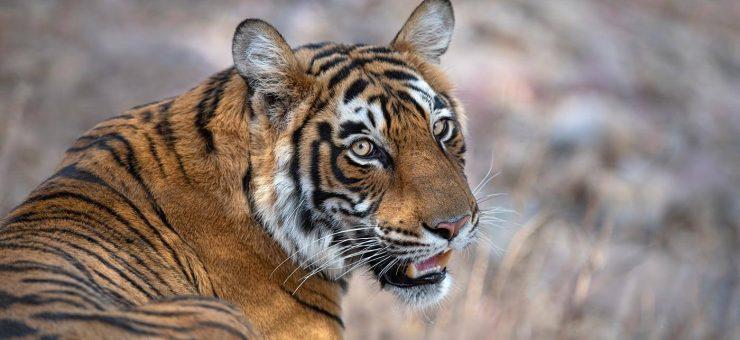For tourists who love nature – sprawling grasslands, dense forests and wildlife – a few days of tranquillity and serenity in what could be called a Garden of Eden, India offers an array of National Parks and Sanctuaries where you can watch the magnificent tigers, the stately elephants, leopards, the one-horned rhinos, a myriad exotic birds and countless reptiles and insects. This is the land of Rudyard Kipling’s Baloo, Bagheera and Mowgli as well as Jim Corbett’s Land of the man eaters.
Jim Corbett National Park
Corbett National Park, seven hours drive from Delhi, is in the forested foothills of the Himalayas in Uttarakhand. The 520 sq kms park is spread across flat valleys, hilly ridges and rolling grasslands. Though the sal is the dominant tree of the region, 110 varieties of trees and 30 species of bamboo can be found in Corbett. The magnificent Ramganga river teeming with fish, in particular the Mahseer, flows through the park. Corbett is famed for its tigers and large herds of wild elephants. You may get up in the morning and just a few hundred yards from the forest lodge you may see wild baby elephants chasing each other or making mock charges at their proud mamas.
One of the most exhilarating features of Corbett is the ride on elephant back at day break. It is cold and as you huddle in groups of four on the elephant’s back, the mahout steers through dense foliage and 3 m tall elephant grass where a tiger may be lurking. Even if you are not lucky enough to spot a tiger you cannot miss the cheetal, sambar, hog deer and barking deer. Corbett is the home of 50 species of mammals, 580 kinds of birds and 25 reptile species. The long-nosed Gharial (Gavialis gangeticus) and crocodiles can be seen basking on the banks of the river.
Dudhwa National Park
Dudhwa National Park, in Lakhimpur Kheri district of Uttarakhand, on the border of Nepal, has tall coarse grass sometimes forming impenetrable thickets, swampy depressions and lakes and excellent sal and bamboo forests. Dudhwa is home to the magnificent Barasingha, the 12 horned swamp deer. In the rutting season the Barasingha lock horns in battle for the female and if you are lucky to see the combat it is an unforgettable spectacle. The big predators of the park are the tiger and the leopard. You can also find the sloth bear, jackals, civet cats, wild boar and, of course, a few rhinos in the grasslands. Colourful woodpeckers, barbets, kingfishers, minivets, bee-eaters and bulbuls flit through the forest canopy. At night the great Indian horned owl and jungle owlet set out on their predatory missions.
The best time to visit Corbett and Dudhwa is November to May. There is enough accommodation, private and government run, inside the parks and around them. But the expanding human population around both reserves is telling on these parks.
